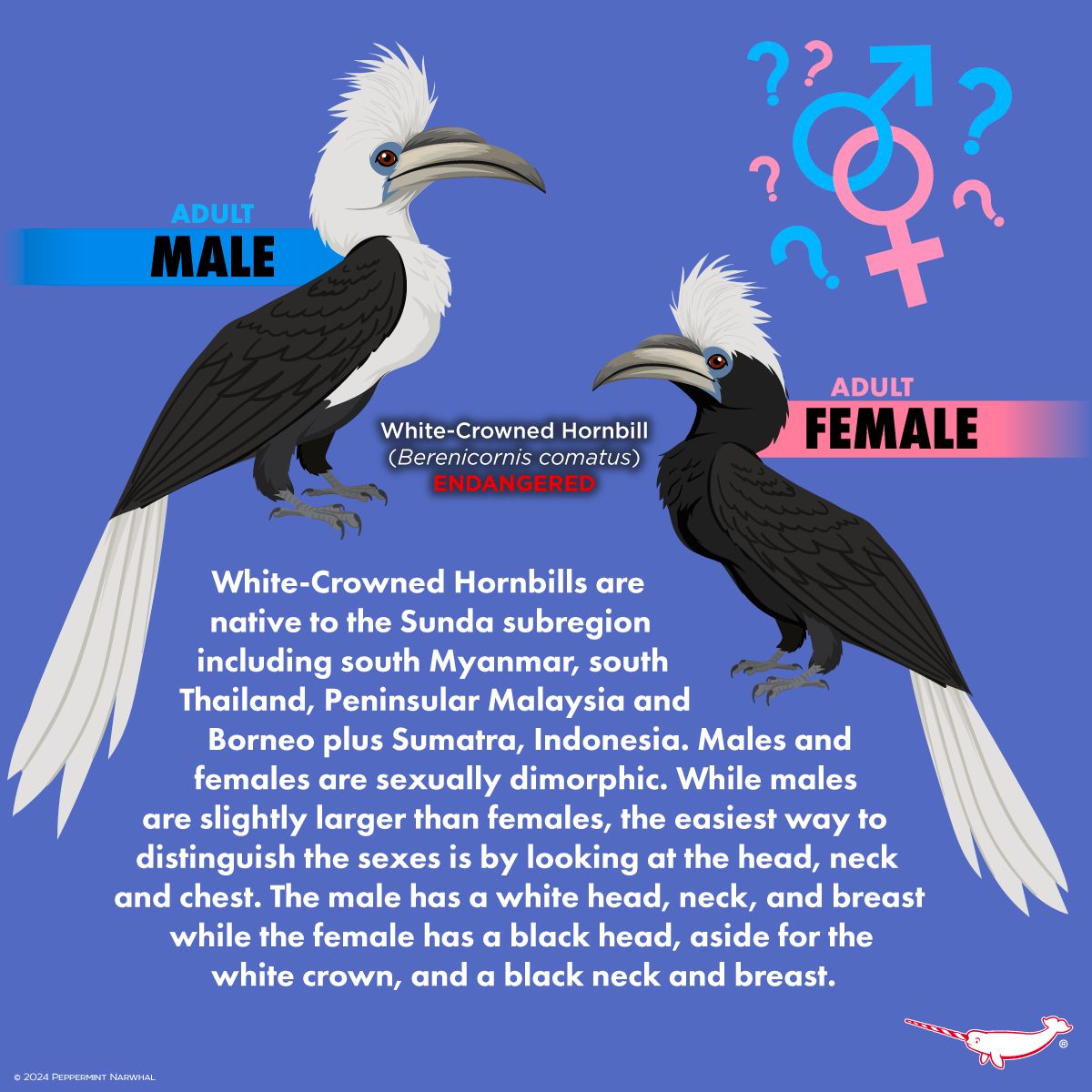Today is Love Hornbill Day, dedicated to celebrating and raising awareness about one of our planet’s most unique and captivating bird species – the hornbill. Among the myriad of hornbill species, today we spotlight a particularly enchanting and less familiar species, the White-Crowned Hornbill (Berenicornis comatus), which is currently classified as endangered. In honor of this day, we delve deep into the world of White-Crowned Hornbills, from their distinctive physiology and behavior to the urgent conservation efforts necessary to ensure their survival.
Key Points:
1. Distinct Sexual Dimorphism of White-Crowned Hornbills: Understanding the physical differences between males and females and their ecological significance.
2. Habitat and Distribution: A closer look into their natural habitat within the Sunda subregion, detailing the environmental pressures affecting these areas.
3. Behavioral Ecology: Insight into the breeding habits, diet, and social structure of White-Crowned Hornbills and how these factors play into their survival strategies.
4. Conservation Status and Efforts: Discuss the endangered status of White-Crowned Hornbills and outline existing and potential conservation strategies for their protection and recovery.
5. Role in Ecosystems and Human Culture: Exploring the ecological roles of White-Crowned Hornbills and their significance in local cultures and global biodiversity.
The White-Crowned Hornbill is a fascinating bird species that displays unique sexual dimorphism in its striking white head, neck, and breast in males, distinguishing them from females with predominantly black plumage except for the symbolic white crown. This distinction is crucial for mate recognition and territory defense, making it essential to their breeding and social interactions. This information is vital for conservation strategies, particularly in breeding programs and population studies.
These birds inhabit the Sunda subregion’s lush forests, which span from south Myanmar and Thailand through Peninsular Malaysia to the verdant islands of Borneo and Sumatra, where they prefer dense canopies to forage, nest, and roam freely. However, their habitats are threatened by deforestation, agricultural expansion, and urbanization, which makes preserving their natural habitats paramount.
White-Crowned Hornbills are predominantly frugivorous, relying on a diet of fruits supplemented by insects and small vertebrates. This influences their role as seed dispersers and contributes to the regeneration and health of their forest habitats. Their breeding habits exhibit unique characteristics, such as sealing the female in a tree cavity during incubation and early chick rearing, exemplifying the species’ sophisticated parental investment and adaptations for survival.
The White-Crowned Hornbill is classified as endangered, facing significant threats to its populations, such as habitat loss, poaching, and the pet trade. Therefore, conservation efforts are multifaceted, ranging from habitat protection and restoration to anti-poaching campaigns and research on their ecology and behavior for better management practices. International cooperation is crucial, as their distribution spans national borders, necessitating a unified approach to their preservation.
These birds are integral to the ecological balance of their habitats, aiding in maintaining forest diversity, which, in turn, supports a wide range of other species. Culturally, they are often revered and featured in local folklore and traditions, underscoring the need to protect them as symbols of natural heritage and biodiversity.
In summary, the White-Crowned Hornbill is a species of great ecological importance and striking beauty, facing urgent threats that demand immediate and effective conservation responses. Understanding their complex lives and challenges can help us better appreciate these magnificent birds, our responsibility towards these avian wonders, and the broader environmental conservation efforts required to preserve our planet’s precious biodiversity for generations. Black head, aside from the white crown, and a black neck and breast.
Shop www.peppermintnarwhal.com


